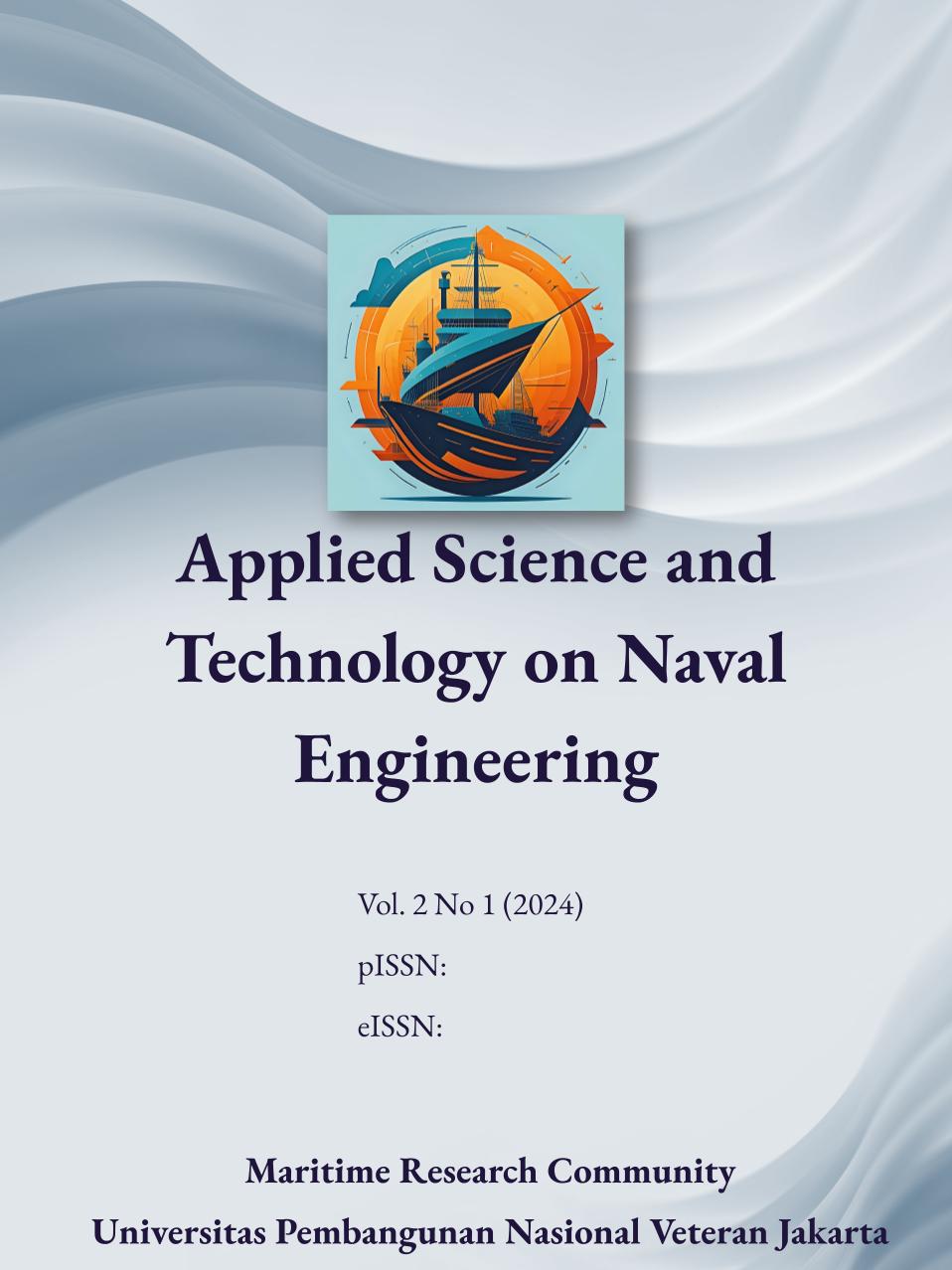Analisis Efisiensi Propeler Dengan Desain Bilah Melingkar
Keywords:
Toroidal Propeller, Propulsion Efficiency, Propeller Performance, CFDAbstract
The toroidal propeller, characterized by its circular blade shape, has gained attention for its potential benefits, including increased efficiency and reduced noise levels. Despite its advantages, limited scientific literature exists on toroidal propeller research, predominantly relying on field experiments. This study seeks to assess the toroidal propeller's performance by comparing it to a conventionally shaped propeller with similar geometric parameters. Parameters such as propeller diameter, number of blades, hub diameter, and blade front view are adjusted in the conventional propeller model to mimic the toroidal design. The pitch parameter of the conventional propeller is varied to explore its ability to match the efficiency of the toroidal propeller. Utilizing Computational Fluid Dynamics (CFD) simulations through Simscale software, propeller models are evaluated across a range of RPM (1000 - 6000). The simulations yield thrust and torque values, subsequently used to calculate efficiency. Results indicate that thrust and torque increase with higher pitch and RPM. Interestingly, a variation of the conventional propeller with a pitch of 171.45 mm demonstrates superior efficiency compared to the toroidal propeller, albeit with lower thrust. Visualization of fluid flow on each model reveals optimal flow in the toroidal propeller, devoid of vorticity. This study enhances understanding of toroidal propellers, offering insights that contribute to the ongoing development of this technology.
References
Blain, L. (2023). Toroidal propellers: A noise-killing game changer in air and water. NEW ATLAS. Retrieved August 28 from https://newatlas.com/aircraft/toroidal-quiet-propellers/
Ebrahimi, A., Razaghian, A. H., Seif, M. S., Zahedi, F., & Nouri-Borujerdi, A. (2019). A comprehensive study on noise reduction methods of marine propellers and design procedures. Applied Acoustics, 150, 55-69. https://doi.org/https://doi.org/10.1016/j.apacoust.2018.12.004
Oscar. (2023). Toroidal Propellers: A Quieter Future for FPV Drones? https://oscarliang.com/toroidal-propellers/
Pieniazek, J., & Ciecinski, P. (2021, 23-25 June 2021). Measurement system for small propeller propulsion. 2021 IEEE 8th International Workshop on Metrology for AeroSpace (MetroAeroSpace),
Press. (2023). TSAW Drones technical paper on toroidal propellers. sUAS News. Retrieved August 36 from https://www.suasnews.com/2023/05/tsaw-drones-technical-paper-on-toroidal-propellers/
Sharrow, G. C. (2023). PROPELLER (United States Patent No. US20230249793A1). https://www.patentguru.com/US20230249793A1
Strem, T. S. C. (2017). TOROIDAL PROPELLER (United States Patent No. US010836466B2). https://patents.google.com/patent/US10836466B2/en
Vidiarto, B., Zakki, A. F., & Hadi, E. S. (2019). Analisa Pengaruh Penambahan Tip Winglet dan Variasi Sudut Rake Terhadap Performa Propeller Tipe B4-70. Jurnal Teknik Perkapalan, 8(1), 10. https://ejournal3.undip.ac.id/index.php/naval/article/view/25119

